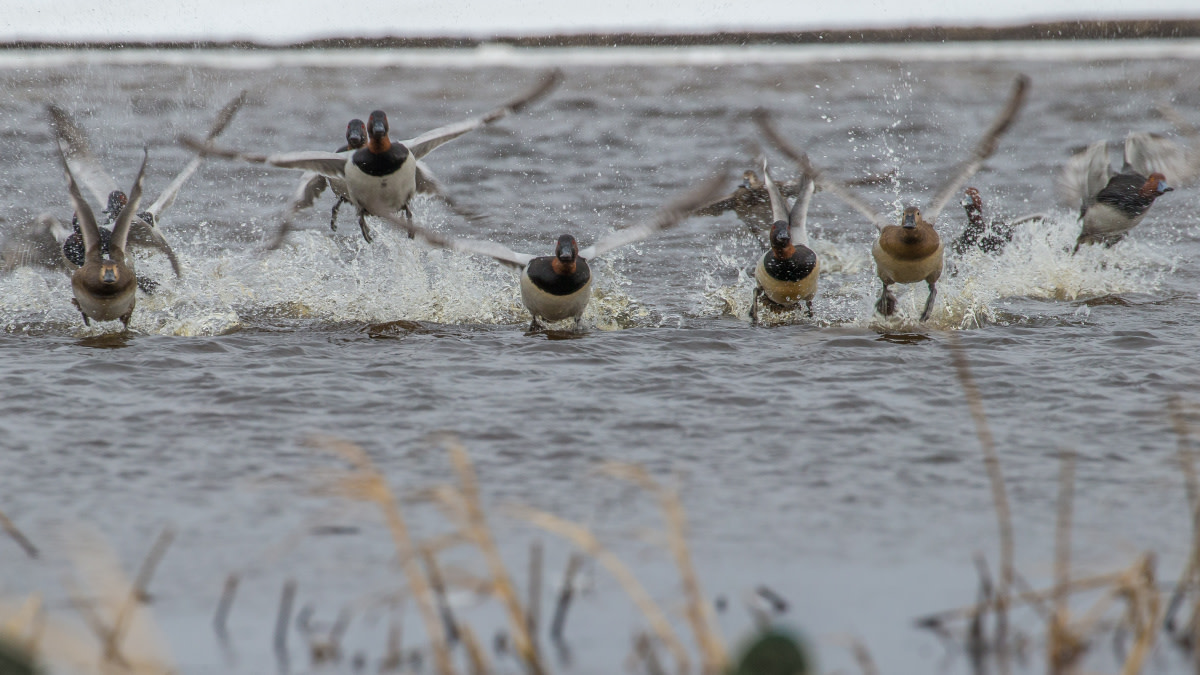
My first fishing memory involves pulling bullhead after bullhead from my grandpa’s stock pond. They outcompeted everything else in the shallow waterhole and would grab any bait as soon as it hit the water. It was the perfect situation for a budding fisherman who just wanted fish on the line. But I soon longed for greater challenge, something more sophisticated like bluegill, bass and crappie.
I asked my father as to why they put so damn many bullheads in Grandpa’s dam .
“Well, we didn’t,” he said. “Waterfowl brought them here. Ducks get fish eggs stuck to their feet and carry them around to other lakes.”
Dad’s explanation blew my mind. How does that even work? Where are they coming from? Why do mallards hate Grandpa’s pond so much that they overpopulated it with bullheads? I still ponder some of those questions today.
My dad’s egg-transfer theory, which is common among fishermen, goes something like this: a duck paddles through aquatic weeds rife with fish eggs; the eggs stick to the duck’s feet; the duck flies to a new body of water where the eggs fall off; the eggs hatch; viola, a new fish population.
As an adult who no longer takes such stories at face value, I feel compelled to unpack this theory step by step.
Dabbling ducks, like mallards, pintails and teal, are unlikely to come in contact with fish eggs because of their preference for feeding on the surface. Diver ducks, on the other hand, scavenge for vegetation down to 10 feet. For the sake of our hypothetical, let’s focus on a diver duck.
A diving duck could come in contact with fish eggs. But, in order to carry them to another body of water, the eggs would need to be very sticky, and the duck very gentle taking off. Unfortunately, most fish eggs are just adhesive enough to keep them stationary in light current. The bigger issue, however, falls to ducks’ gentleness, or lack thereof.
Diving ducks require long runways and while a canvasback sprinting across 20 yards of water might look swift, it’s likely too violent to maintain gentle egg adhesion.
For the sake of argument, let’s say that some eggs do, in fact, stay attached. It seems plausible that the eggs would fall off upon landing, because divers land with a fierce, feet-first skid. The sudden rush of water against the duck’s legs would surely jar the eggs loose. Could the eggs survive and proliferate? Doubtful.
Even under perfect conditions, the majority of eggs don’t hatch. According to Blue Dog State Fish Hatchery, an adult female walleye will produce about 1 million eggs in her lifetime. Of those million eggs, 50 make it through the first year, at which point they’re still only halfway to sexual maturity. Going off of those rough numbers, a duck would need to transfer 20,000 eggs to get one yearling fish.
This duck-transfer theory seems to unravel under scrutiny. South Dakota Game, Fish and Parks biologist Todd St. Sauver agrees.
“I’ve heard this old wives’ tale many times in my career, and am not aware of any legitimate research done on the subject,” said St. Sauver. “In theory, the adhesive eggs of species like walleye, fathead minnow and northern pike could potentially stick to waterfowl and survive a very short trip to another body of water. However, I believe it’s a real stretch.”
While St. Sauver may not buy in to the egg-transfer theory, he does think fish puddle-jump by another means.
“A potentially more feasible possibility, in my opinion, is the transfer of actual fish by fish-eating birds, such as cormorants and pelicans,” he said. “I base this on a couple of observations of cormorants regurgitating very fresh-looking fish when startled.”
Having witnessed similar behavior, I tend to agree.
While working at Gavins Point National Fish Hatchery, we harvested a walleye pond that contained a single trout. The hatchery’s unconnected trout pond was about a quarter-mile away, but the scars on the trout’s back told the whole story. It was most definitely scooped up by an eagle that frequents the hatchery, but fell from the raptor’s talons before being eaten, splashing into a new home.
Other theories exist on how fish show up in unexplained places, all of which are as crazy as the next.
In Mexico’s Yucatán Peninsula, for example, some biologists believe that the sporadic distribution of small fish is thanks to hurricanes picking them up. In Lithuania, a senior researcher from Klaipeda University says that small tornadoes can scatter fish and eggs into new areas. In Germany, a 1950 textbook author claims to have witnessed northern pike hatch from eggs found on a duck’s face. In the Eastern U.S., a researcher from George Mason University thinks that snapping turtles are to blame, when they migrate to new bodies of water with fish eggs attached.
“Several times over my career I’ve wondered how fish got into bodies of water with no apparent flowages or stocking,” St. Sauver said. “I’m not sure we’ll ever be able to figure it out.”
In most cases, I’d wager that the explanation is far less complex than we’re making it. Bucket biologists have been responsible for moving fish all over the world, and I’m sure Grandpa’s dam is no exception. Regardless, I’ll hold out hope that each canvasback, snapping turtle and tornado I see is carrying a school of walleye to that pond.
Feature image via Phil Kahnke.






